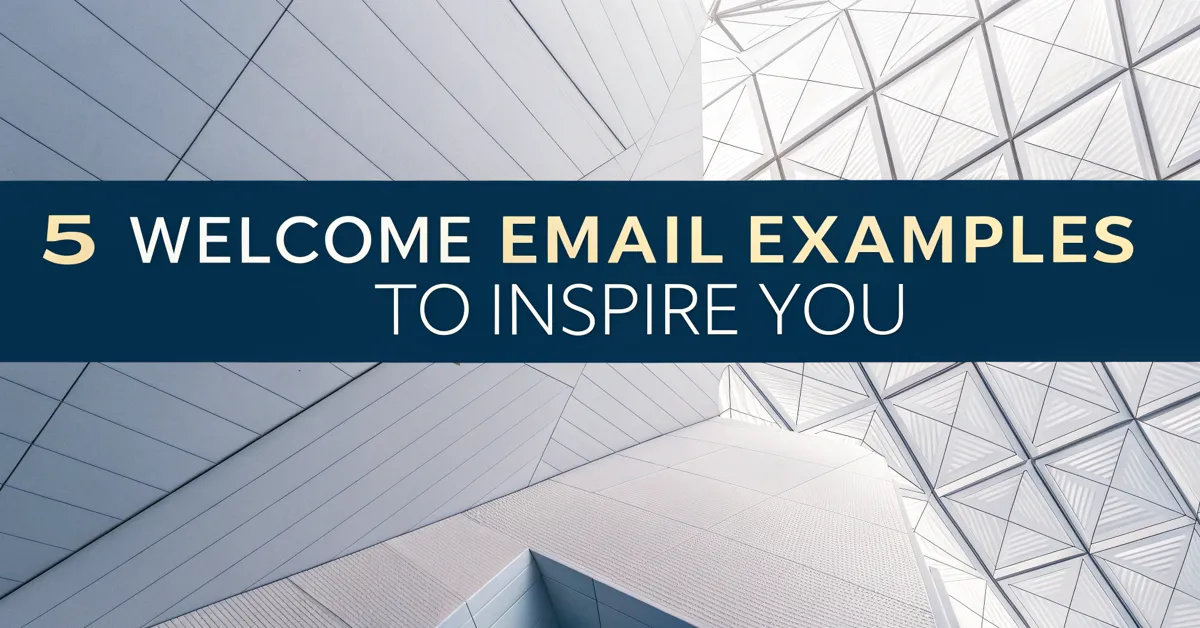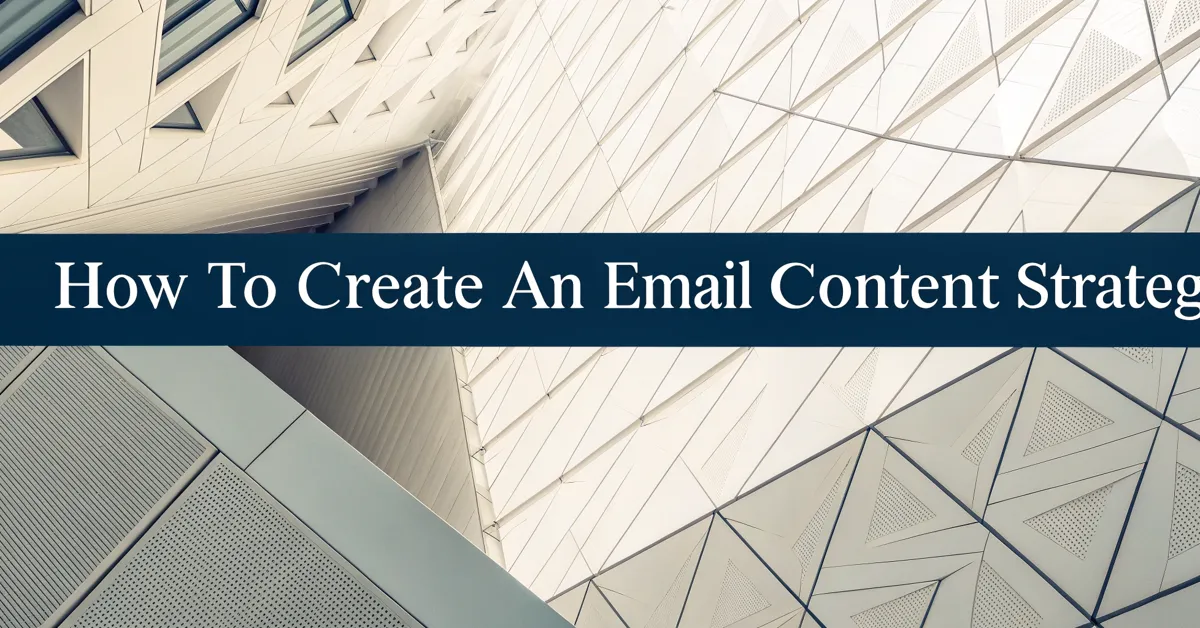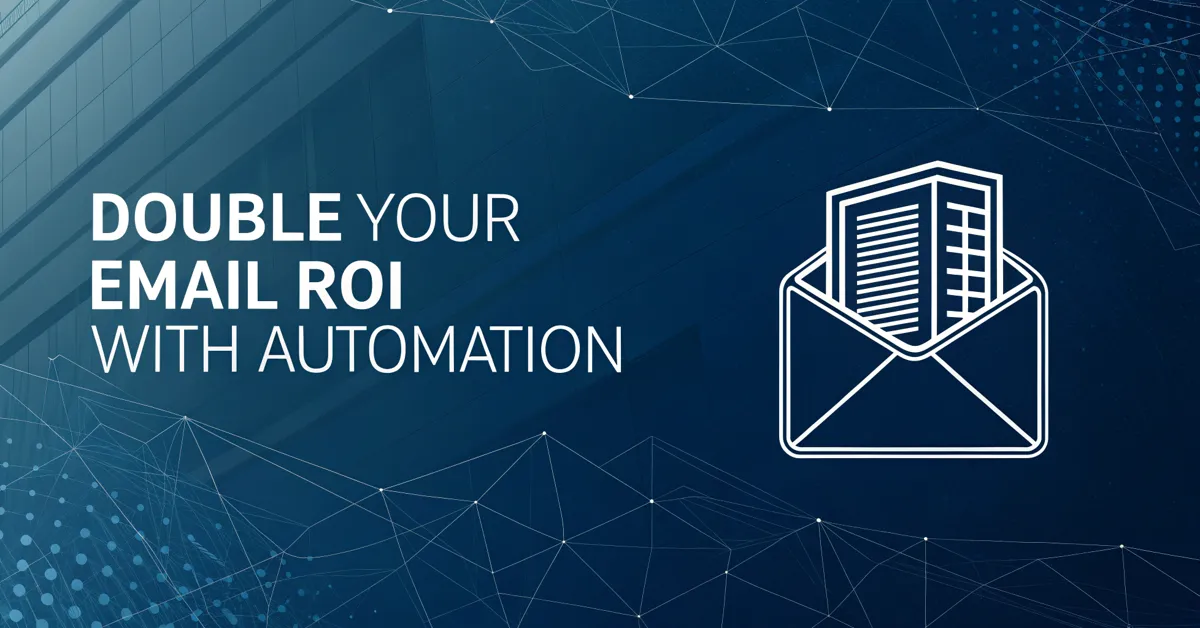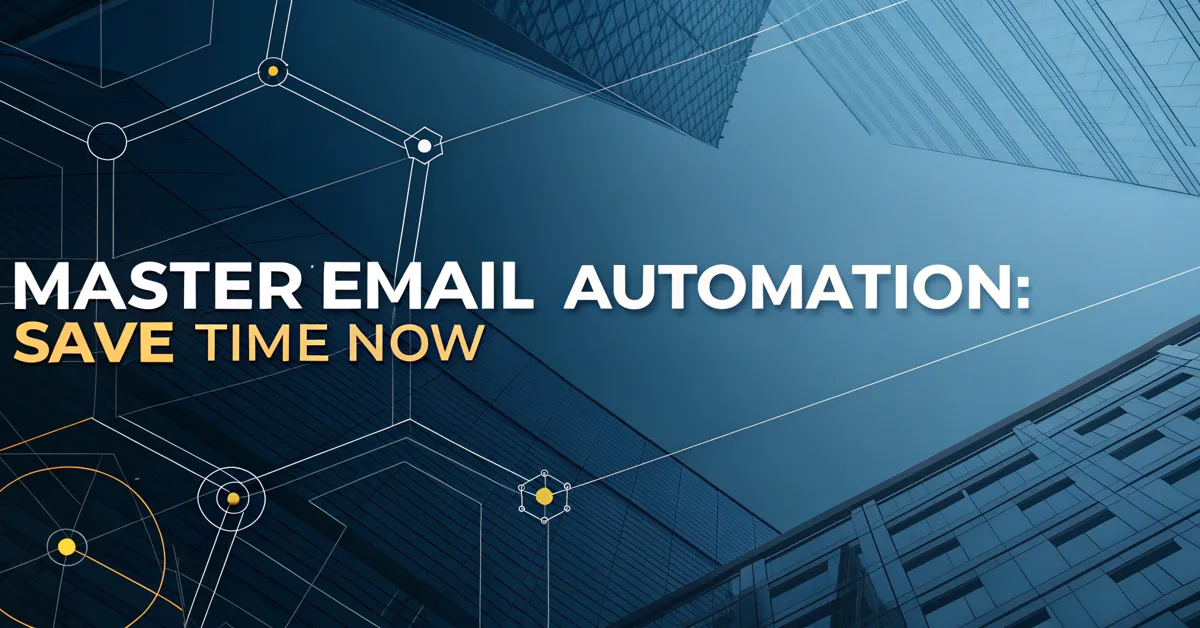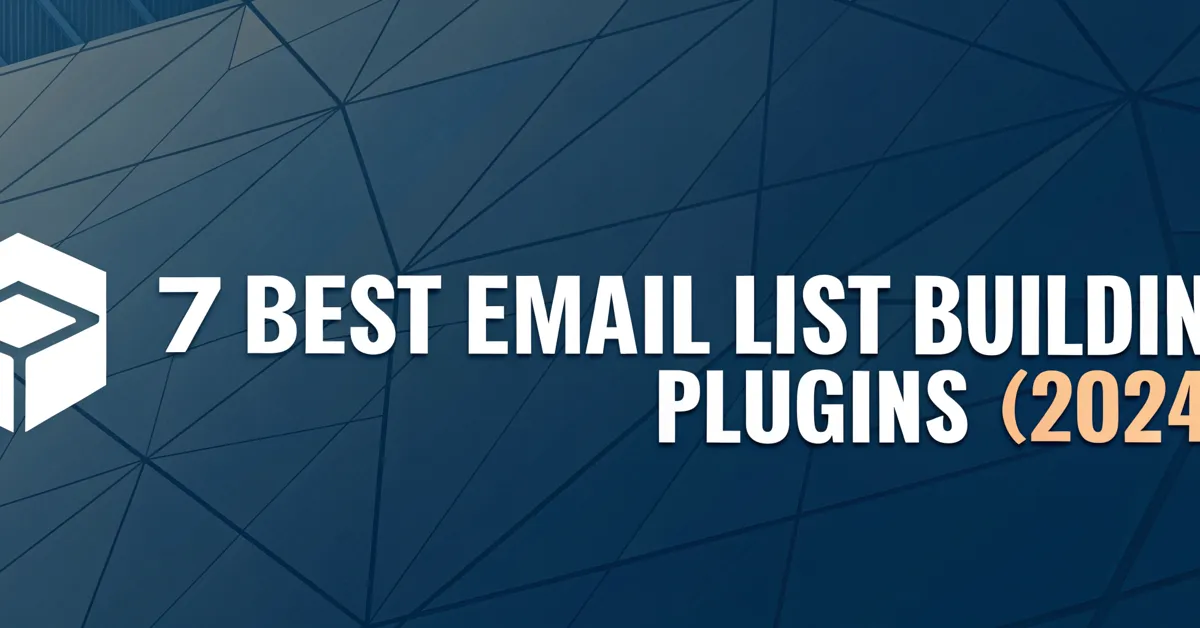Welcome emails can make or break the first impression a new subscriber has of your brand. They are a key chance to show value and set the tone for all emails to come. But, with all the noise online, how do you craft a welcome email that stands out and does its job? You need to see what works and what does not, and the best way to do that is by diving into some good examples. Let’s take a look at five different welcome email examples to see what makes them shine.
What makes a welcome email shine?
Before we jump into some examples, it helps to know what makes a welcome email good. A great welcome email is more than just a quick “hello.” It’s a chance to start a real bond with your new subscriber. Think of it as a digital handshake. You want to be warm, clear, and show the value you bring. Here are a few things that great welcome emails do:
- Say Thank You: Show your thanks for joining your list. It’s just good manners.
- Set the stage: Tell your subscribers what to expect. How often will you email them? What will you share?
- Show your style: Let your brand’s style shine through. Use your logo, colors, and tone of voice.
- Give a gift: Offer a gift, a free tool, or a discount as a thank you for joining. It is a great way to show value right away.
- Ask them to act: Tell your subscribers what to do next. Is there a next step? Guide them to it.
Now, let’s look at some welcome email examples and see these traits in action.
Welcome email examples
Here are five welcome email examples. Each one takes a slightly different path. But, all of them set the right tone for a lasting bond.
1. The simple hello
Sometimes, simple works best. This welcome email gets right to the point. It makes a great first step to building a bond with your new subscriber. Here is what we can learn from this email:
- Clear subject line: The subject line is direct and to the point. It makes sure the user knows what the email is all about. It says, “Welcome to Our Community.”
- Personal touch: Using a simple “Hi there” is warm and friendly. It makes the email feel like it is coming from a real person.
- Thanks and warmth: The email begins with a simple “Thank you for signing up!” It is important to show value. It makes the user feel welcome right away.
- Set expectations: The email quickly tells the user what to expect next. It notes, “Get ready for great tips.” This helps the user know how to plan for your emails.
- Clear call to action (CTA): The “Go to the blog” button is clear and easy to see. It tells the user what to do. It also guides them further to your site.
- Simple design: The email is clean and easy to read. There are no extra designs or images that might take away from the message.
- Brand feel: The use of the brand’s colors and logo makes sure the email stays true to the company’s feel. This builds brand recognition.
This email is a great base for a brand that likes to keep things simple. It is also a good choice if you want to send a series of welcome emails. You can use this one as the first touchpoint. Then add more details in the next emails.
2. The gift giver
Who does not love a free gift? This type of welcome email gives a gift right away. It makes the user feel like they have gained value. It also shows the brand’s generosity. Here is what we can learn from this welcome email:
- Inviting subject line: The subject line uses the word “free.” It is a good way to draw the user in. It notes, “Your free ebook is here!”
- Visual hook: The large image of the ebook draws the eye. It is clear about the gift. It also shows the user exactly what to expect.
- Thanks with value: The email thanks the user for signing up and also gives them a free gift. This makes the user feel good about their choice to join the list.
- Direct access: The email makes it very easy to grab the gift with a clear button that says “Download Now.”
- Set future steps: This email sets the stage for future emails by noting, “Look out for more great content from us.”
- Clear brand tone: The brand’s use of colors and logo keep things in line with its overall feel. It helps with brand recognition.
This email is a great choice for any brand that has a free gift to offer. It is also a good way to get the user to act and use the gift. This will help to show how your brand can be useful.
3. The warm guide
This welcome email aims to make new users feel at home. It takes the user by the hand and shows them around. It is a good choice for brands with lots to offer. Here is what we can learn from this welcome email:
- Friendly subject line: The subject line is very inviting. It notes, “Welcome! We’re so glad you’re here.” It makes the user feel valued.
- Warm welcome message: The first line says “Hey [Name]!” It makes the message feel very personal and warm.
- Overview of value: The email states what the user will get from the brand. It says, “Get all our best tips.” This helps the user see why being on the list is a good idea.
- Clear steps: The email shows different areas of the site. It also guides the user to go and look at each one. The email guides the user to each one with different links.
- Brand feel: The brand’s style shines in the use of colors and logos. It keeps a solid brand look throughout.
This email is great for brands that want to show all of their content. It is also a good way to get users to engage more with your site. It is a great base for starting a user on their journey.
4. The social connector
This welcome email wants to build a bond beyond just email. It pushes users to join their community on social media. It is a good way to grow your brand’s social presence. Here is what we can learn from this welcome email:
- Social subject line: The subject line hints at joining a community. It notes, “Join the party! Follow us on social.”
- Quick thanks: The email starts with a quick thanks for signing up. It also shows the brand is happy to have the user on board.
- Social push: The main goal of this email is to get users to engage on social media. It clearly asks users to follow the brand on social with links to each page.
- Brand touch: The use of brand colors and logos help keep the email consistent. It makes the email feel true to the brand.
- Clear message: The main goal of the email is very clear. It also makes it very easy for the user to connect on social media.
This welcome email works well for brands that are active on social. It can also help to get new email subscribers to start engaging. It helps build a bigger community online.
5. The discount deal
A discount can be a great way to start a bond with a new user. This email does just that. It gives a special offer right away. Here is what we can learn from this welcome email:
- Deal-driven subject line: The subject line says, “Here’s 10% off your first order.” It is direct. It also gets the user’s attention fast.
- Thank you with a bonus: The email thanks the user for joining. It also gives a 10% discount as a welcome gift. This makes the user feel good about joining.
- Easy use: It gives the discount code. It also tells the user how to use it. It also makes it simple and clear to use.
- Sense of urgency: The email states that the discount is good for a limited time. It also gives the user a reason to act fast.
- Brand style: The brand style shows in the use of colors and logos. It helps build brand recognition and a steady feel.
This email works well for any brand that has an online store. It is a great way to get a new user to make their first purchase. It is also a good way to give a feeling of value right away.
Common traits
While these five welcome email examples are all different, they share some common traits. Here are a few of the most important:
- Clear subject line: The subject line sets the stage for the email. It makes it clear what the email is all about. It gets the user to open the email.
- Personal welcome: It gives a personal touch. It can be done with a simple “Hi,” or by using the user’s name. It shows the user is not just another number.
- Thank you for joining: It makes sure to thank the user for signing up. It is just good manners. It also helps to make the user feel good about joining.
- Clear message: They get straight to the point. They do not try to do too much at once.
- Call to action: They push the user to take some kind of action. It could be anything from browsing the site to downloading a gift.
- On brand: They show the brand’s style through the use of colors, logos, and tone of voice. This helps build brand recognition and feel.
These common traits are the base of what makes a good welcome email. It is what makes users want to keep reading and stay engaged.
How to craft your welcome email
Now that you have seen a few good examples, how do you craft your own? Here are a few steps to follow:
- Know your goals: What do you want your welcome email to do? Is it to get users to browse the site, make a purchase, or join your social pages? The goals you set will affect your actions.
- Plan your message: Use a clear subject line that is short and sweet. Make sure to include a personal touch, thank the user for joining, and let them know what to expect next.
- Show your style: Use your brand’s colors, logos, and tone of voice. This helps to make the email feel like it is coming from you. It also helps build brand recognition.
- Add a call to action: Make it clear what you want the user to do. Use clear buttons or links. Make it easy to act on your ask.
- Test and tweak: See how users respond to your welcome email. Look at how many people open and click on the links. You can then make changes.
By using these steps, you can craft a welcome email that works for you. You can also use the welcome email examples as a base. You can tweak each example to best fit your brand and your goals.
Other things to think about
As you plan your welcome email, here are a few other things to keep in mind:
- Timing is key: Send your welcome email right after a user signs up. They are most engaged at this time. They have just signed up, so the brand will be fresh in their mind.
- Mobile first: Many users will read your email on their phone. Make sure your email looks good on all types of devices. It needs to be clean and easy to read on both mobile and desktop.
- Double opt-in: If you are using double opt-in, make sure your email is simple and clear. It is best to make it as easy as possible to confirm their email.
- Keep it short: Users will not want to read a very long email. Get straight to the point. Do not try to do too much at once. Keep things short and sweet.
- Track results: Use an email service to track how well your email is doing. Check how many people open it, click on it, or unsubscribe. You can use this data to improve your emails.
Keeping these points in mind will help you craft a welcome email that is both useful and effective. They are all important factors to think about when you craft your welcome email.
Welcome emails and your brand
Welcome emails are more than just a simple “hello”. They are a key part of your brand’s bond with your users. They are a chance to show value, set the stage, and keep the user engaged. By looking at these five welcome email examples, you can now see what works. You can also see what does not work. You can then use this knowledge to create a welcome email that fits your brand. You will make a great first step with every new user. You will also ensure a lasting bond. By using these welcome email examples as a guide, you will make a great first impression.
Time to make a stellar first impression
Welcome emails are a big part of your email marketing plan. They give you a chance to connect with new users. They are also a chance to show your brand’s value. These welcome email examples will help you find what works. You can then start to craft welcome emails that make a real impact. So, what are you waiting for? It is now time for you to start making a great first impression with every new subscriber.
